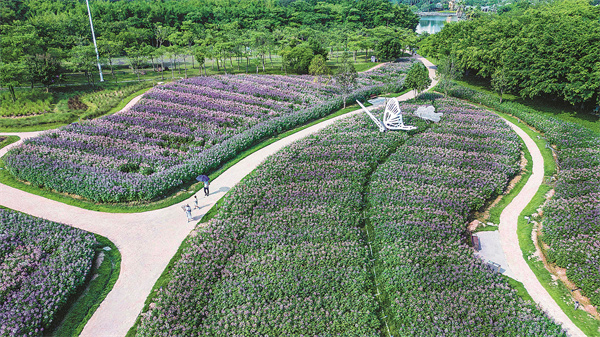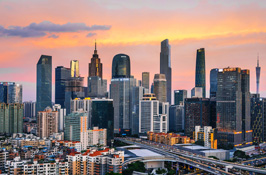Mangroves restored to promote green advancement

A greenway in Zhanjiang. [Photo provided by Liu Jicheng/For China Daily]
Since 2019, Zhanjiang's surface water and drinking water sources at the county level and above have maintained a 100 percent rate of excellent quality.
Since the 13th Five-Year Plan (2016-20), the air quality of Zhanjiang has remained excellent. In 2021, the city's air quality ranked first in Guangdong.
From January to August this year, the air quality of Zhanjiang was further improved. The air quality index was 99.2 percent, and the PM2.5 concentration has been at its best level in recent years and continued to rank first in Guangdong.
The industries in Zhanjiang have also adopted a green concept in overall development. One example is the construction of the hydrogen-based shaft furnace project of Baosteel Zhanjiang Iron and Steel on the city's Donghai Island, which is a zero-carbon demonstration plant.
In December 2021, the first phase of the photovoltaic power generation project at Baosteel Zhanjiang Iron and Steel was connected to the grid and began to distribute photovoltaic power for the building of the plant.
This year, Baosteel Zhanjiang Iron and Steel plans to implement the second phase of its photovoltaic power generation project, which is estimated to reduce carbon emissions by 76,500 tons per year. It will be the largest distributed photovoltaic power generation project in the country. Meanwhile, the construction of the photovoltaic project of Zhongke (Guangdong) Refinery and Petrochemical was also rolled out in the first half of this year.
Enterprises on the island are connected to form a "green community "for environmental protection and recycling.
The hydrogen, nitrogen and oxygen produced by steelmaking are continuously supplied to the next-door Zhongke (Guangdong) Refinery and Petrochemical, and petrochemical production materials such as C5 and C9 are sent to the surrounding downstream enterprises through pipelines.
In 2021, the scale of onshore wind power and photovoltaic power generation in Zhanjiang ranked first in Guangdong. The cumulative consumption of new energy power was about 6 billion kilowatt-hours, accounting for 32 percent of the total power supply in the city.
The 14th Five-Year Plan (2021-25) for Ecological Environmental Protection in Zhanjiang issued earlier this year proposed that by 2025, Zhanjiang will achieve remarkable results in the green transformation of production and lifestyle, greatly improve resource utilization efficiency and maintain the top air quality in Guangdong.
The goal of ecological and environmental protection has been set up in four categories and 18 target indicators of environmental governance, response to climate change, environmental risk prevention and control and ecological protection.
Next, Zhanjiang will vigorously promote the protection and construction of "beautiful bays" and improve the quality of the marine ecological environment.
As a major marine city, Zhanjiang is surrounded by the sea on three sides and is endowed with unique marine resources. The coastal water area under the jurisdiction of the city is about 15,000 square kilometers.
The mainland coastline is 1,243.7 km long. It has three typical ocean ecosystems of mangroves, coral reefs and seagrass beds.



 Print
Print Mail
Mail

